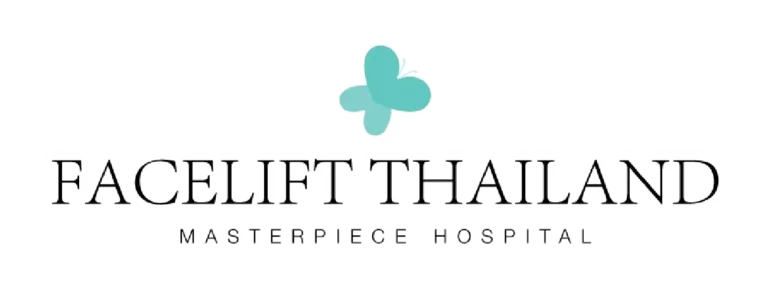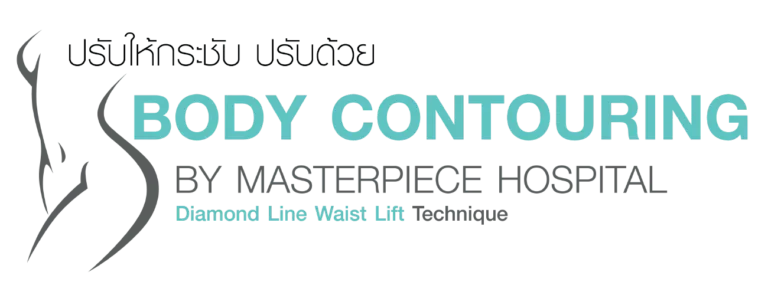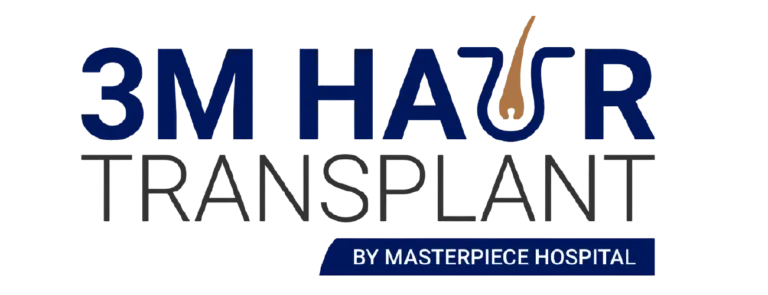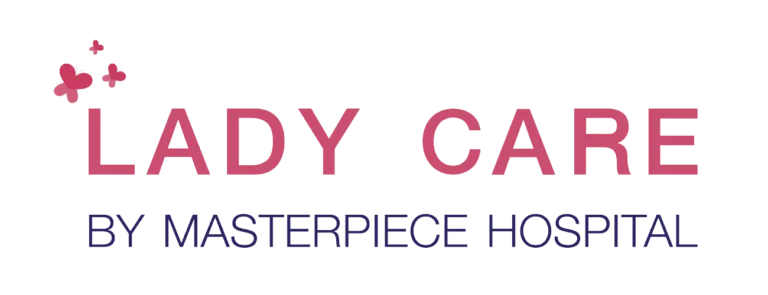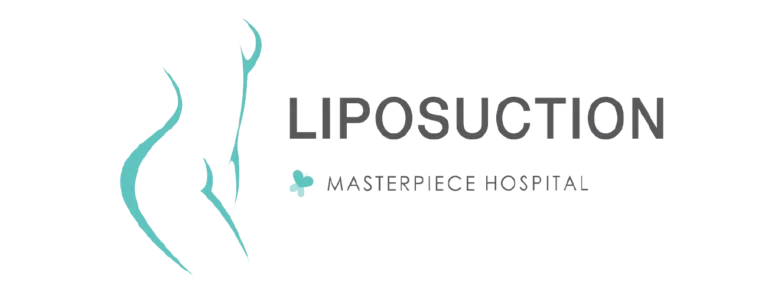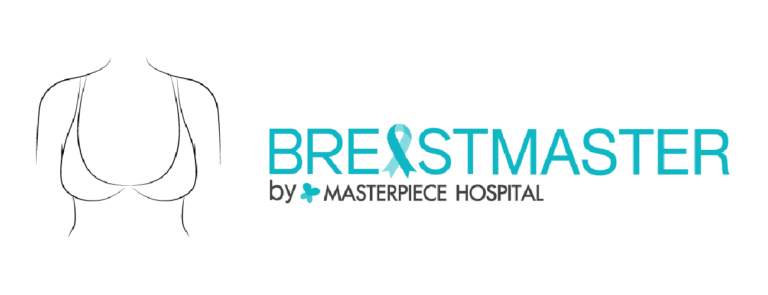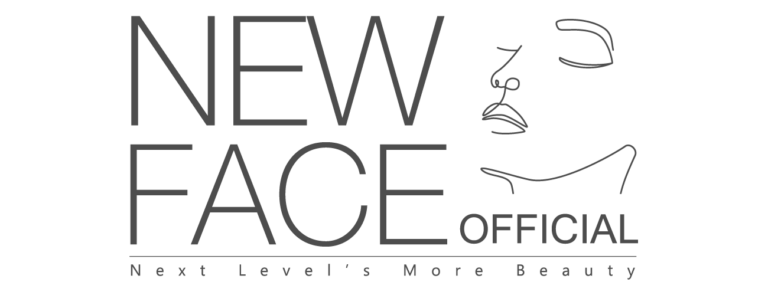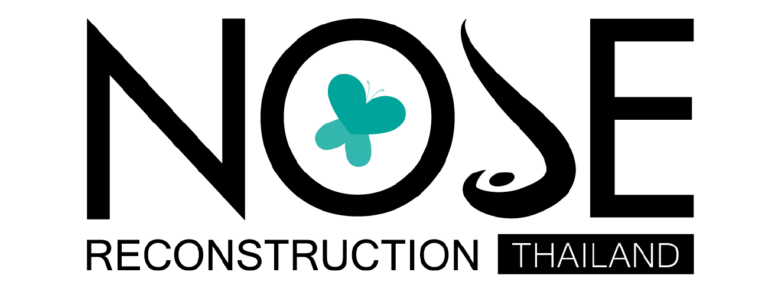Open rhinoplasty: Open rhinoplasty is the optimal solution for addressing structural problems of the nose.
Open rhinoplasty
Open rhinoplasty is a surgical technique designed to effectively correct the nose’s structure, extending the nasal septum to achieve a beautifully pointed shape with a “silicone-free tip,” minimizing the risk of perforation. Each individual’s face has unique and distinct characteristics, including specific nasal structures. For example, the typical Asian nose often features a low bridge, a wide base, and a thick nasal tip. Therefore, it is crucial to address problems in a way that suits the individual’s basic anatomy while creating a nose that closely matches the desired sample or model.
What is open rhinoplasty?
Open-technique rhinoplasty that adjusts the structure of Nose Reconstruction is a surgical procedure that opens the wound at the base and tip of both nostrils. It is a surgery that allows the doctor to analyze the problem accurately and fix various nose shapes. Extend the tip of the nose to be high and pointed safely with cartilage. The tip is free of silicone, so there is no worry about it breaking through. Design the shape of the nose as desired. Open rhinoplasty is a very popular rhinoplasty technique in Korea and is becoming increasingly popular in Thailand and the cosmetic surgery industry worldwide. This is because open rhinoplasty can increase the height of the bridge of the nose along with improving the internal structure of the nose. It also adjusts the shape of the tip of the nose to be more pointed, slender, and beautiful according to the patient’s needs. It is a technique that meets the needs of both male and female rhinoplasty.
Open rhinoplasty: If silicone is not used to augment the tip, what material should be used instead?
- Rhinoplasty with your own ribs
- Rhinoplasty with cartilage behind the ear
- Rhinoplasty with Septum
- Decorate the original nasal structure to make it more beautiful.
Who is open rhinoplasty suitable for?
- For those with a short, round nose tip
- For those with a crooked nasal bridge
- For those with a nasal hump
- For those with a drooping nose tip
- For those with a large nose
- For those with an upturned nose tip
- For those seeking a Western-style nose augmentation, also known as “Sai Fo”
- For those seeking a Korean-style nose augmentation
- For those wanting a nose augmentation following international trends
Where is the best place for open rhinoplasty? a common question for those making a decision.
Masterpiece Hospital’s open rhinoplasty prioritizes the overall facial balance of each individual, analyzing nasal issues in detail on a case-by-case basis. Anesthesiologists are present throughout the procedure to ensure safety. The hospital adheres to high standards, with experienced surgeons employing advanced techniques to address problems according to each patient’s needs. The goal is to achieve results that closely align with the desired outcome, enhancing the unique beauty of your face.
How to choose a nose shape that suits your face.
Many people interested in cosmetic surgery often consider Rhinoplasty first. Because the nose is central to the face, contributing to its overall aesthetics and dimensionality.
However, not everyone who has a nose job will come out looking as beautiful as a celebrity. There are still important factors such as the shape of the face and our original nose tissue, which are the main variables that will affect each person’s nose job. If anyone chooses a nose shape that is suitable for their face, they can be assured that their nose will come out beautiful.
If you’re unsure about which nose shape will complement your face, we have a helpful method for selecting the right one. Let’s explore how to choose a nose shape that enhances your unique beauty and highlights your facial features.
Teardrop style
Teardrop rhinoplasty is a surgical procedure aimed at lengthening the tip of the nose to achieve a teardrop shape. This style is particularly popular among Thai and Korean celebrities. It is most suitable for individuals with a moderately long nose and sufficient soft tissue at the tip. However, it is not recommended for those with less flesh at the tip of the nose, as this increases the risk of the silicone rupture.
Upturned Nose
It is a decoration to make the tip of the nose turn up, which is different from the teardrop nose. Suitable for those who want to be beautiful and stylish. However, those who think about doing this nose shape should have a hooked nose or a rather wide nose, which is more suitable.
Pointed Nose
This nose shape is popular among women, second only to the teardrop nose. It resembles a Western-style nose and is ideal for individuals with a low or disproportionate nose bridge. The result is a sharper nose with a raised tip, enhancing overall facial proportions.
Barbie Line Nose
It is a nose shape that is popular among women from both Asia and Europe. The Barbie line nose has a distinctive feature of a high bridge and a small tip similar to a Barbie doll’s nose. This shape is suitable for women with a relatively small nose and narrow nostrils, but still has enough nasal flesh to enhance the bridge to look higher.
Slightly Upturned Nose
This nose shape is suitable for people who do not have a bridge because it emphasizes the bridge of the nose and slightly tilts the tip to balance the face. Although the tip is not very pointed, I assure you that your face will be more beautiful and people around you will compliment you.
Alar reduction
Alar reduction is ideal for individuals with wide and large nostrils, resembling those of a rose apple. By reducing the size of the nostrils, the overall facial structure gains more dimension. This procedure helps create a more balanced appearance by ensuring that the tip of the nose aligns better with the bridge, resulting in greater facial proportion. Nostril reduction can also be performed alongside rhinoplasty, combining both procedures into a single operation. This method is particularly suitable for individuals who have a flat, wide nose with a low bridge. While the procedure may involve some pain, it is generally considered worth the discomfort for the resulting changes.
Nasal bridge contouring surgery
For Asians who have a naturally high nose but also a crooked or arched nasal bridge, or an overly thick nose, their appearance may lack dimension. Undergoing cosmetic surgery on the nasal bridge can help create a narrower, slimmer look. This procedure enhances facial balance, giving the nose a more proportionate and refined appearance, almost as if it has been reborn.
These are the most popular types of nose surgeries that many people choose to undergo. If you are considering nose surgery, it’s important to research the various options and select the shape and method that best suits your needs. I assure you that if you make an informed decision, the results will look great.
What is open revision rhinoplasty?
Masterpiece Hospital recommends a nose augmentation procedure that adjusts the nasal structure using the open rhinoplasty and Nose Reconstruction technique. This approach can help you achieve your desired nose shape, whether inspired by Aum Patchrapa, Mai Davika (Western-style noses), Kao Supassara, Aom Sucha, View Wannarot, or even the popular Korean celebrity and idol styles. These designs often feature a sloped bridge and a pointed tip, characteristic of the Korean aesthetic.

What is Nose Reconstruction?
The Nose Reconstruction technique involves correcting the nose by adjusting its structure without using silicone. This method allows for customized reshaping of the nose to meet individual preferences. Highly popular in Korea, it achieves a natural and aesthetically pleasing result. The procedure uses an open rhinoplasty approach, where an incision is made at the base of the nose. The underlying bone is reshaped to create a smaller, more refined appearance, and the nostrils are adjusted to enhance their shape. The nose tip is also refined to appear slimmer, aligning with modern nose shape trends.

Nose reconstruction or correction can be achieved without the use of silicone. Instead, this procedure utilizes the extension of the nose tip to make it higher and more pointed, using the septal cartilage. The septal cartilage is unique in that it is flat, straight, smooth, and strong.
During the surgery, the doctor will remove only two-thirds of the cartilage from the nose. This cartilage will be repurposed to augment the tip of the nose, ensuring there are no adverse effects on the body later on. By using the cartilage from the nose, the tip can be lengthened, resulting in a beautiful teardrop-shaped nose with a pointed tip. This method effectively adjusts the overall structure of the nose and is currently considered one of the best options available.

In some cases, synthetic materials might not be necessary for enhancing the bridge of the nose. Instead, natural materials from the patient’s own body, such as muscle membranes, adipose tissue, or rib cartilage, can be used, depending on the doctor’s assessment. However, if additional height for the nasal bridge is required, the doctor may choose materials like Gore-Tex, which is a globally recognized synthetic option regarded as one of the best for this purpose. Gore-Tex is preferred because it does not promote membrane formation, tartar buildup, or cause grooves in the bone, which can occur with some other synthetic materials. Additionally, it is durable and maintains its shape without shrinking or deteriorating over a lifetime. The choice of materials will be carefully evaluated by the doctor to meet each individual’s specific needs.

What problems can this method solve?
Open rhinoplasty, structural adjustment, NOSE RECONSTRUCTION or rhinoplasty without silicone can solve various nose problems such as short upturned nose, thin nose tip, thick and large nose tip, wide nasal bone base, crooked deformity, or scar tissue contracture. These problems cannot be solved with general silicone augmentation.
Is open rhinoplasty painful? can the tip really last a lifetime without breaking through?
For patients who have nasal tissue issues or have received silicone implants, there is a risk that the tip of the nose may become thin and vulnerable to breakage. Simply adding more silicone to correct the nose can worsen the problem at the tip. Instead, using the open rhinoplasty technique for nose reconstruction can provide a permanent solution to this issue.
Open rhinoplasty: it’s about more than just height!
Rhinoplasty or revision rhinoplasty using structural adjustment techniques, such as Nose Reconstruction or silicone-free rhinoplasty, allows for comprehensive reshaping of the nose to achieve a more refined appearance—something that standard silicone augmentation cannot provide. A common misconception is that nostril reduction alone makes the nose appear slimmer. While it reduces the size of the nostrils, it does not make the nose itself look slimmer.
With Nose Reconstruction, the doctor can adjust the entire nasal structure, resulting in a naturally slimmer appearance, including the nostrils, without the need for nostril reduction in most cases. However, in some instances, nostril reduction may still be necessary depending on the patient’s specific issues. The doctor will carefully assess and analyze each case to determine the most suitable approach.
In contrast, open rhinoplasty that includes nostril reduction primarily makes the nostrils smaller but does not significantly impact the overall nasal structure or create a slimmer appearance.
What nose shapes are best for Thai people?
Every person’s facial structure is unique, and naturally, each face shape pairs well with a particular nose shape. Today, I would like to introduce you to which Thai face shapes are suitable for specific nose shapes.
- Long face
People with long faces are mostly suitable for a sloped nose with a pointed tip, or in short, a Korean nose. For people with long faces, having a sloped nose with a pointed tip will help the face have more dimensions and look more prominent. - Round face
A round face typically pairs well with a teardrop nose. The downward-protruding bridge of a teardrop-shaped nose can make a round face appear slimmer, contributing to a more balanced and proportionate look. - Square Face
People with square faces—both men and women—typically look best with a sloped nose that has an upturned tip. This type of nose complements the angular features of a square face, creating a sharper appearance. The upturned tip gives the face a more refined and elevated look, akin to that of Western models. - Oval Face
Individuals with oval faces are generally suited for all nose shapes, as this face shape is more versatile than others. Regardless of the nose shape—whether it’s a teardrop nose, a sloping nose with a pointed tip, or a sloping nose with an upturned tip—these styles will always complement an oval face beautifully.
Measurements for Assessing Nose Shape.
In the side view, the shape of the nose is often considered most significant because it captures the attention of many. People frequently discuss the characteristics of the nose from this angle. However, I will explore another perspective on what constitutes the ideal nose shape based on the following theory:
These four angles determine the shape of the nose as seen from the side.
- Nasofrontal angle
When the nose is viewed from the side, there are two main components to consider: the height of the nose at the eyes in relation to the forehead and the bridge of the nose. In general, the angle should be slightly obtuse. More simply, it should be a little lower than the forehead, creating the “slope” that people often refer to. If the angle is a right angle, the bridge of the nose might appear too sharp. If it’s a straight line, the bridge of the nose might look too high and harsh. This also suggests that the forehead is either not prominent or too flat. Therefore, the nose should not be too high, as it will make the nose look too rigid. For men, the angle may be slightly wider, making the bridge of the nose appear higher and more defined. For women, the focus is on the slope, where the height of the nose at the eyes is a bit lower, giving the face a softer and sweeter appearance. - Nasolabial angle
The second angle refers to the angle at the tip of the nose concerning the mouth. For women, this angle typically measures around 100 to 110 degrees, making it slightly wider than a right angle. This wider angle contributes to a pointed and upturned appearance at the tip of the nose. In contrast, men usually have an angle that is closer to a right angle.
When comparing Thai women to Korean women, the angle of the nose in Korean women is generally slightly wider than in Thai women. However, Korean women tend to have a longer average nose length than Thai women.
The wider or upturned angle in Korean women does not cause their noses to appear short. A closer observation reveals that the angle at the tip of the nose influences its perceived length. A narrower angle can make the nose appear longer or more drop-shaped, though it may look less pointed. Conversely, a wider angle can make the nose look slightly shorter but more pointed.
To clarify further, I define “pointed” as the second angle, or nasolabial angle, being wider than 90 degrees. A “water drop” nose, on the other hand, refers to an angle smaller than 90 degrees. These two characteristics are distinctly different, akin to parallel paths; they cannot converge or coexist in the same individual. - facial convexity and total facial convexity
Most Thai people tend to want a nose shape similar to that of Koreans. So, I’ll compare it with a Korean nose. Generally, Koreans have narrower angles in the last two measurements compared to Thais. A narrower angle means that the central part of the face, particularly the nose, projects more forward than the chin. The more prominent tip of the nose in Koreans makes the central area of the face and the nose tip stand out more.
Therefore, if you want a Korean-style sloped nose with a prominent tip, the first angle should be a slightly narrow obtuse angle, the second angle should be slightly wider than 90 degrees, and the final angle should be a little narrower to highlight the tip of the nose.
However, whether you can achieve the desired nose shape depends on the condition of the tissue and the original physical structure of each person, as mentioned earlier. If you are unsure about which shape to choose, you can consult with a doctor at Masterpiece Hospital for advice, ensuring both beauty and safety for everyone.

Self-care after rhinoplasty
- Apply a cold compress or ice pack to the cheeks and forehead for 1-3 days, avoiding direct contact with the nose. After this period, if a bruise develops, use a washcloth soaked in warm water or a hot water bag for application.
- After surgery, which takes 24-48 hours, you may experience a headache, pain, or congestion in the nose and ears, as well as some facial swelling. Take painkillers and anti-inflammatory drugs as prescribed by your doctor.
- After surgery, the doctor will place nasal packings in both nostrils to splint the nose. This may make breathing difficult. Instead, breathe through your mouth.
- The patient must come in for an injection of antibiotics and have the nasal packing removed from the nostrils the day after surgery at the hospital with an experienced nurse. (Don’t remove it yourself.)
- The nose may be most swollen for about 2-3 days. The splint will help reduce the swelling and help straighten the nose. It will be removed on day 7 with stitches removed. (Don’t remove it yourself.)

What should you do after rhinoplasty?
Rhinoplasty is considered one of the top 5 surgeries that most people are interested in because the wound is small, there is little pain, and the shape looks natural. In addition, modern medicine has introduced new techniques to help with the surgery. The materials and equipment used have been developed to be more advanced.
Before deciding to choose a cosmetic surgery clinic, you should consider carefully and consult directly with the surgeon before making a decision. The doctor will advise on how to behave both before and after surgery so that the body can recover to normal quickly. Taking care of yourself after a nose job is therefore important and should not be neglected. If you take good care of your new nose job, you will get a beautiful nose that fits as you want. You can follow the doctor’s advice as follows:
- Wound Care: Avoid getting the wound wet for about one week after surgery, as moisture can lead to inflammation and infection.
- Sleeping Position: For about one month, do not sleep on your side or lie flat. This helps prevent the movement of the materials or silicone used in your nose implant.
- Elevate Your Head: In the initial days after surgery, sleep with your head elevated higher than usual, or consider sitting up for the first three days. This can help reduce swelling and encourage the silicone to tighten the bridge of your nose more quickly.
- Managing Swelling and Bruising: If you experience swelling or bruising, apply a cold compress (such as a cold towel or a clean towel wrapped in ice) for the first three days. After that, you can switch to a warm compress if the swelling begins to subside.
- Avoid Touching the Area: Do not pick, scratch, or disturb the area around the nose implant, as this could cause the nose to tilt or deform.
- Limit Physical Activities: Refrain from activities that might cause impact, such as sports, vigorous exercise, riding in a bumpy vehicle, and sexual activity.
- Makeup Restrictions: Avoid wearing makeup for one month, as certain cosmetic ingredients may negatively affect the healing surgical site.
- Avoid Irritants: Steer clear of environments or situations that could cause coughing, sneezing, or blowing your nose, as these actions can impact the surgical area.
- Gentle Facial Cleansing: Instead of washing your face traditionally, use a cotton ball or soft cloth dampened with water to wipe your face gently. This will help prevent any impact to your nose.
- Wound Cleaning Routine: Clean the wound twice daily, in the morning and evening, using a cotton swab soaked in saline to remove any blood stains from the nostrils. Apply Betadine afterward.
- Delay Other Cosmetic Procedures: Avoid other cosmetic treatments, such as laser therapy or filler injections in the face, during the first month to reduce the risk of inflammation and side effects.
- Stop Smoking: Refrain from smoking for two to four weeks, as it can hinder wound healing and slow the recovery process.
- Be Patient with Your Appearance: It’s normal to experience swelling after a nose job, so try to relax and not worry excessively about the shape of your nose. Give it some time to settle into its new form.
- Follow Physician Instructions: Take any prescribed medications as directed and schedule follow-up appointments with your doctor.
In addition to these care instructions, it’s essential to keep track of your recovery over the following timeframe: 24 hours, 7 days, 2 weeks, and 1 month.
- 24 hours after rhinoplasty
24 hours after rhinoplasty, some individuals may experience pain, tightness, or swelling around the nose and face. Swelling tends to peak during the first 2-3 days, and headaches may also occur. To alleviate these symptoms, it is recommended to take painkillers and anti-inflammatory medications as prescribed by your doctor.
Regarding wound care, be sure to clean the wound with a saline solution and sterile cotton swabs. This will help prevent blood from sticking to the stitches. You can also clean your face with cotton pads soaked in plain water or saline solution, or use a gentle cleanser, taking care to keep the wound dry. If the wound becomes wet, it can slow down the healing process and increase the risk of infection. - 7 days after rhinoplasty
7 days after rhinoplasty, you can safely remove the tape that has been used as a soft splint for your nose. To do this, gently wipe the area with warm water and carefully peel off the tape. During the first week following surgery, take extra precautions to avoid any accidental bumps or pressure on your nose. Refrain from massaging or squeezing the area, as this can cause inflammation. It is crucial to avoid touching the surgical site for at least 1 to 3 months to ensure proper healing.
Pay attention to your sleeping and eating positions to minimize any strain on your nose. Avoid activities that involve physical impact, such as heavy exercise, boxing, running, swimming, and sexual activity, as these can increase the risk of complications. If swelling persists, apply a cold compress—such as a cold towel, cold gel, or ice pack—gently to your cheeks and forehead. Avoid using hot compresses during the first week. Following these guidelines diligently will support optimal healing and long-term results. - 2 weeks after rhinoplasty
2 weeks after rhinoplasty, the stitches can be removed. However, you must still clean the stitches after removal regularly and avoid having a runny nose. Or if you have a cold, you must take antihistamines or decongestants immediately to prevent the mucus from flowing into the wound, which may cause infection.
As for eating, you can eat almost everything, except for forbidden foods, fermented foods, pickled foods, and undercooked foods. Please be patient. - After 1 month of rhinoplasty
After 1 month of rhinoplasty, you can enjoy your life almost 100% normally. You can take vitamins or supplements. As for pickled foods and alcoholic beverages, you may have to wait until 45 days or more. For those who want to do scuba diving activities in the first 3 months, you may have to abstain from them first.
As for bruising, it depends on the individual. Some people have almost no bruises, but you still have to self-care according to the doctor’s advice. After 2 weeks, the bruises will start to fade. After 1 month of rhinoplasty, the nose will shrink by about 80%, but there will still be some swelling. If you want it to heal, you have to wait at least 3 months or more to start seeing a clearer nose shape. Avoid wearing glasses for 3-6 months after rhinoplasty surgery and avoid exercising for at least 1 month because it may cause more swelling and the blood to stop flowing more slowly.
Caring for yourself after a nose job is as important as selecting a qualified surgeon or a reputable cosmetic surgery clinic. Proper self-care will facilitate a smoother recovery, promote faster wound healing, minimize inflammation, and reduce potential side effects. Therefore, it’s crucial to diligently follow your doctor’s advice.
Frequently Q & A after open rhinoplasty
Common Issues leading to repeated rhinoplasty.
The reasons for undergoing revision rhinoplasty can arise from various factors, including dissatisfaction with previous results or undergoing surgery at a facility that did not meet standard practices, where the doctor may have lacked sufficient experience or expertise. Furthermore, performing rhinoplasty without considering the patient’s nasal tissue can lead to complications such as perforation.
Additionally, other potential risks should prompt an immediate consultation with a doctor if observed, including the following:
- Thin and clear nose tip, red and tight nose tip, or nose tip at risk of perforation
This issue often arises from nose surgery that uses pre-made silicone implants, particularly when the silicone is excessively long or has been augmented too high. It is especially common among individuals with minimal nasal tissue, leading to a gradual thinning of the tissue at the tip of the nose until it becomes transparent and red. If left untreated for an extended period, this condition can result in inflammation and significantly increase the risk of nasal perforation. - Floating silicone
This is a condition where the silicone is not attached to the nasal tissue. You can touch the tip of your nose with your finger and move it back and forth slightly. If the silicone floats, it will be able to move back and forth and you will see the edge of the silicone. There are 2 possible causes.
– From the doctor’s surgery
– The doctor did not carve the silicone to fit the patient.
– The doctor placed the silicone in the shallow skin layer, not under the bony membrane, which may cause the silicone to move.
– The doctor performed the surgery by making the silicone insertion slot too wide or too narrow, causing the silicone to float out.
-From the patient himself
– The patient had a serious accident, causing the silicone to move or float.
– Twisting the nose frequently and regularly may cause the silicone to float. - Crooked Nose or Slanted Nose
This condition occurs when the silicone rod in the nose becomes crooked to one side or when the silicone is straight but the nose still appears crooked or slanted. It is one of the most common issues after rhinoplasty. The potential causes include:
– Pre-existing nasal asymmetry, such as a crooked or convex nose base, was not addressed by filing the hump or correcting the nose base before surgery. As a result, the placement of silicone leads to a crooked or slanted appearance.
– Incorrect positioning of the silicone, where it does not adhere properly to the nose base.
– Using a size or shape of silicone that is unsuitable for the nose base, causes the silicone to shift, become tight, or create a sagging appearance.
– Experiencing a severe impact, collision, or accident after surgery, can displace the silicone. - Nose deformity from nose thread lift
A nose thread lift may not always achieve the desired shape, and the results are temporary. As a result, it is necessary to undergo repeated thread lifts every 6 months to a year. One issue with this procedure is that scar tissue can pull on the nasal tissue, potentially leading to deformities. In some cases, this may require corrective nose surgery later on. - Previously Injected Liquid Silicone, Filler, or Other Substances into the Nose
Injecting liquid silicone or filler into the nose may initially provide a beautiful and well-shaped appearance. However, in the long term, the liquid silicone may migrate to inappropriate positions, causing the nose to lose its shape or develop scar tissue. Treatment involves removing the silicone before a new rhinoplasty can be performed. - Problems with the shape of the nose
- Sometimes, the nose augmentation may not have the desired shape, such as a bar-like, hard, unnatural nose bridge, a short or upturned nose tip, or deformed nostrils. The main cause is usually the use of pre-made silicone nose implants, and the doctor is not skilled in sculpting and decorating the silicone nose implants, resulting in a nose that does not fit the face. This does not have any negative effects on the body, but it may cause a loss of confidence.
When the above symptoms occur, you should quickly consult a specialist and receive timely treatment before the nose is perforated. If left for a long time until inflammation and severe infection occur, making it difficult to fix, a long recovery period will be required because the silicone must be removed for at least 3-6 months to allow the tissue to repair itself and create new tissue to replace it. These problems can be fixed with the open rhinoplasty technique.

What is the best approach for revision rhinoplasty in individuals who have previously undergone rhinoplasty?
The most popular technique for nose correction is open rhinoplasty. This surgical procedure involves making an incision that opens the structure of the nose, allowing the surgeon to thoroughly examine the nasal anatomy and address various issues more effectively than other surgical methods. Open rhinoplasty can remedy a range of concerns, including a large nose, a hooked nose, a hump on the nose, a short nasal tip, or even a thin tip, which may not be as effectively corrected with closed rhinoplasty techniques. Additionally, it can create the appearance of a higher nose if desired.
Pros of open rhinoplasty
- The doctor can fix the problem directly because the structure of the nose is visible, reducing the chances of crookedness, tilt, or perforation.
- The results are permanent and look natural.
- It can fix all types of nose shape problems.
- Suitable for people with little nasal tissue because it stretches the nasal septum, making the tip more pointed than in closed rhinoplasty.
Cons of open rhinoplasty
- The surgery is expensive.
- The duration of the operation can be lengthy, depending on the complexity of the case.
- It requires a highly experienced and skilled surgeon because it is considered a high-risk procedure.
- The recovery period is longer compared to other techniques.
Preparation before revision rhinoplasty
- Thoroughly examine your physical condition and inform the doctor about your history of drug allergies, chronic diseases, or medications you are taking regularly.
- Stop taking all vitamins at least 1-2 weeks before the rhinoplasty, especially vitamins that affect blood clotting, such as vitamin E, fish oil, coconut oil, rice bran oil, ginseng, grape seed, ginkgo, etc.
- Stop eating and drinking for 6-8 hours before the surgery because, during the surgery, the patient may choke on food or water. However, for local injections, it is not necessary to stop eating and drinking.
- Stop smoking or drinking alcoholic beverages at least 1-2 weeks before the surgery.
- Stop eating fermented foods and seafood because they will cause the wound to swell and heal slower than usual.
- Stop wearing contact lenses on the day of the surgery.
- You should wash your hair clean before the surgery and stop wearing makeup on the day of the surgery.
Self-care after revision rhinoplasty
- In the first 48 hours, it is recommended to apply cold compresses to reduce swelling. After the first 2 days, you can start applying warm compresses.
- You should sleep with your head elevated to help the surgical wound heal and reduce swelling faster. In the first 2 weeks, avoid sleeping on your stomach or your side because it may cause the shape of your nose to move or become deformed.
- Avoid wearing glasses for the first 4 weeks because the area under your nose may press or squeeze, causing the nose to become deformed.
- Avoid alcoholic beverages and all types of fermented or pickled foods.
- Avoid activities that affect your nose, such as exercising, running, blowing your nose, and swimming for 8 weeks.
- Avoid touching your nose hard. Avoid pressing, grabbing, picking, or scratching your nose.
- You can use scar medication only after the wound is comp


